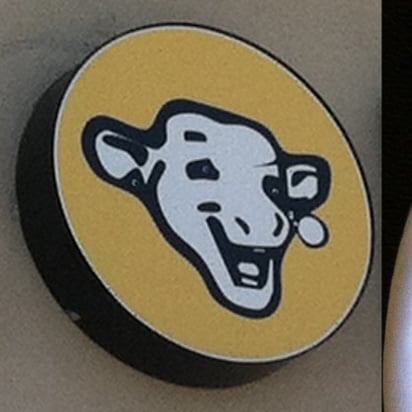Maybe the engine noise hit a resonance frequency of the camera chip - most cameras during operation suspends part of the camera in magnetic field, which also allows for focus and stabilization.
- 0 Posts
- 22 Comments

 6·7 months ago
6·7 months agoTaking a sip of Rum and chuckles at the look on the name of my OS partition:
/dev/mapper/vg-rootand/dev/mapper/vg-home🙃

 5·7 months ago
5·7 months agoNot just plants, wolfs and other animals are quite frequent there also and from studies they have less than 2% birth defects…
That just shows us, that how huge is the nuclear scare propaganda…

 86·7 months ago
86·7 months agoYou probably also didnt heard about Thorium based molten salt reactors, they are much safer than conventional nuclear, also cheaper, and you can have a 50MW installation in space not much larger than a shipping container. A 50MW solar installation is close to 1km2 and thats without any storage included. It even can be modified to run on spent fuel of conventional nuclear power plants.

 47·7 months ago
47·7 months agoYou can make Thorium reactors much smaller and cheaper, basically a 50MW unit is not much larger than a shipping container, while being much more safe than standard nuclear plants. The largest issue is over-regulation of the nuclear power in general.
A 50MW of solar installation is HUGE, and thats 50MW at the sunniest part of the planet: https://newsaf.cgtn.com/news/2019-12-15/Kenya-launches-Chinese-built-50MW-solar-power-plant-MqC575l6Te/index.html, We are basically talking about close to a square kilometer installation…
there is simply no way to call a 50MW solar plant cleaner than nuclear and its probably not even that much cheaper in the end. Compare that to a shipping container sized reactor… Only thing in the way, is the nuclear scare and government regulations.

 22·7 months ago
22·7 months agoThere are functioning Thorium based Molten Salt Breeder reactors, which for ~50MW can be built in a shipping container size - they are small, so can be deployed at local sites, thus reducing transmission losses, much harder to use for weapons (thats why the world tilted towards the use of uranium reactors in the first place), dont need prior enrichment, and can use much higher percentage of the fuel - so much less waste product. Also since the whole stuff is a molten salt, you just drain it from the reactor core and the reaction simply comes to halt.
The technology works, as it was tested when they were deciding if the industry goes with uranium or thorium, but the war lobby win out unfortunately, as they wanted a source for their nuclear weapons, at which the Thorium reactors are not great.
And yes, nuclear is super clean even if we compare it with solar+wind batteries not even counted in to the equation. BTW you can use “spent” fuel rods from conventional nuclear plants in a breeder reactor, to further diminish waste and use them up. https://en.wikipedia.org/wiki/Thorium-based_nuclear_power
There is many tutorials and how tos, this is quite nice one:
https://wiki.archlinux.org/title/LVM
BTW some filesystems like btrfs and ZFS already have a similar functionality built in…
Well not really, cloning is much easier than reinstalling and then configuring everything again…
I have LVM set up from the start, so usually I just copy the /boot partition to the new disk, and the rest is in a LVM volume group, so I just use pvmove from old disk to the new one, fix the bootloader and fstab UUIDs, and Im ready to reboot from new disk, while I didnt even left my running system, no live USB needed or anything. (Of course I messed it up a first few times, so had to fix from a live OS).
But once you know all the quirks, I can be up and ready on a new drive withing 20mins (depends mainly on the pvmove), with all the stuff preserved and set
There were no real reasons to reinstall it, it works fine, occasionally had to purge some config files in home for some apps after major version changes, or edit them, but most work for years. I mean, my mplayer config is from 2009 and last edited 4 years ago…
$ head -3 /var/log/pacman.log [2009-04-04 12:40] installed filesystem (2009.01-1) [2009-04-04 12:40] installed expat (2.0.1-2) [2009-04-04 12:40] installed dbus-core (1.2.4.4permissive-1)I installed my Arch on Desktop in 2009 and it was just cloned from one disk to another through multitude of PCs, and sure, there were occasional troubles, like upgrade from SysV init to systemd, when KDE plasma 4 released, or the time, when I had to run a custom kernel and mesa which supported the AMD Vega 56 card ~month after release.
But nowadays, I didnt had a single breakage for several years, my RX6800 GPU was well supported 3 months after release, and most things just work… BTW I run arch also on my home server, in 6 years it had literally zero issues.

Sounds awful lot like Citrix…